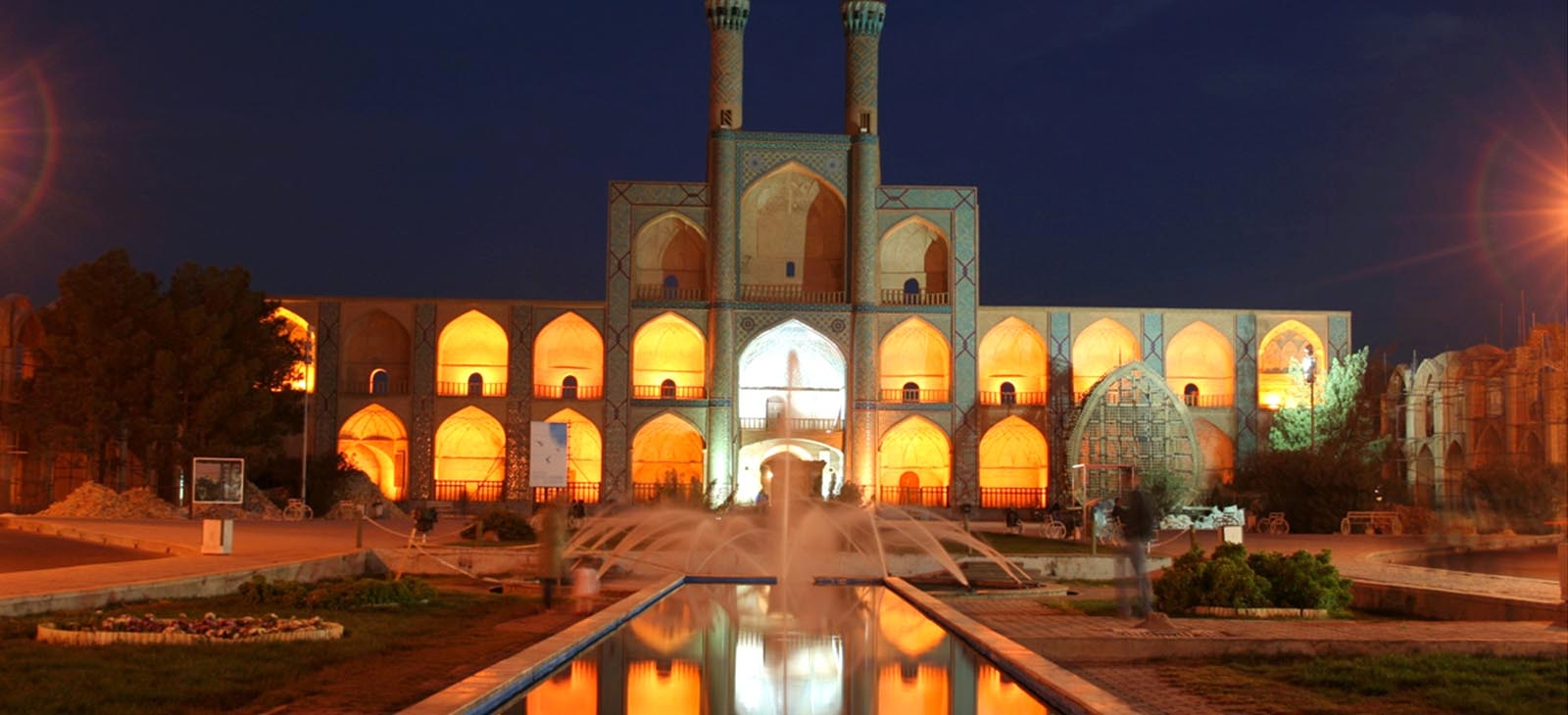The Amir Chakhmaq Complex (Chakhmaq, Chakmaq, Chakhmagh, Chakmak) is a prominent structure in Yazd, Iran, noted for its symmetrical sunken alcoves.
The Amir Chakhmaq Complex is a prominent structure in Yazd, Iran, noted for its symmetrical sunken alcoves. It is a mosque located on a square of the same name. It also contains a caravanserai, a tekyeh, a bathhouse, a cold water well, and a confectionery. At night, the building is lit up after twilight hours after sun set with orange lighting in the arched alcoves which makes it a spectacle. During the Iran-Iraq War and the Iraq wars with the United States and Afghanistan, many Iraqis and Afghanis have come to inhabit the Amir Chakhmaq Square.
The mosque is located on a square of the same name, named after Amir Jalaleddin Chakhmaq, a governor of Yazd during the Timurid dynasty (15th-16th century CE). Separate living areas for Iraqis and Afghanis are nearby. The complex is situated opposite what was theYazd Water Museum.
The prominent structure has a three-storey elaborate façade of symmetrical sunken arched alcoves. It is the largest structure in Iran. In the centre are two very tall minarets. The spiral staircase in one of the two minarets is said to create a feeling of claustrophobia, while it provides views of Yazd. At night, the building is lit up with orange lighting in the alcoves which makes it a spectacle. The complex also contains a caravanserai, a tekyeh, a bathhouse, a cold water well, and a confectionary. The bathhouse, in the front of the building is around 600 years old. Arcades have been added recently on the flanks to provide safety from traffic. Only the first floor above the ground level is accessible. There is a shopping complex in the basement of structure. This is a grand structure of which many innocents souls spent thrier lives.
The complex includes the three-storey tekyeh which used to commemorate the death of Hussein ibn Ali. In the corner of the tekyeh, there is a nakhl, described as a "strong, wooden object with very large metal fixtures and studs". It was venerated during the Shiite commemoration festival of Ashura.

